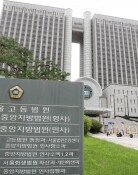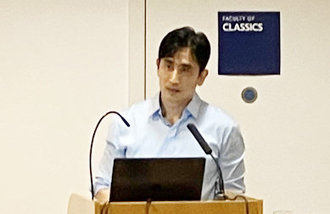Abolish jeonse by minimizing related shock
Abolish jeonse by minimizing related shock
Posted September. 03, 2013 06:54,
In 1968, a man rented a home via jeonse (a rent based on a lump-sum deposit) in Busan as he had to leave Changwon, South Gyeongsang Province, to be assigned to a branch office there. After getting married in 1958, he had continued to live in rental homes but didn`t have to pay. As a teacher who frequently relocated, he had received housing support from village leaders whenever he had to move to another area. At that time, it was also typical to get a deposit money plus monthly rent. Jeonse became common in the 1970s along with the country`s industrialization initiative that led to massive migration of rural residents to cities. Still, rented rooms prevailed then, not rent houses.
Jeonse homes became popular after the mid-1980s. Newly-wed couples started to rent apartments via jeonse. In supply-side, some people purchased homes and rented them in jeonse, to earn money when prices rise. Housing prices were rising steadily and middle class people were getting surplus money. Jeonse was a good means to raise money.
Jeonse prices that had been 60-70 percent of housing prices have risen to 80-90%. There are two reasons why jeonse prices have risen. First, speculation that housing prices would not rise further has prompted people to turn to cheaper jeonse instead of home buying. Second, low interest rates have forced landlords to raise jeonse prices or turn jeonse to monthly rent. Jeonse turning to monthly rent currently accounts for 6-10% of jeonse on an annual basis. As jeonse shifted to monthly rent, supply decreased. As jeonse demand rose however, its prices increased.
The issue is how to tackle this problem. One should first understand that sales prices are higher than jeonse prices because people expect housing prices will rise. If housing prices do not increase, people will prefer jeonse even if its prices approach housing prices since repair costs are minimal, they don`t have to pay property tax, and they don`t had to worry about housing price volatility. Indeed, people have to accept that it is natural for jeonse prices to near housing prices. To put it in theoretical terms, the gap between sales and jeonse prices equals expected returns for rising housing prices discounted at the current value.
The No. 1 principle for government policy is stabilization of the public`s resident stability. To this end, raising housing prices further and encouraging household lending should be avoided. The government on August 28 released real estate measures that focus on encouraging people who want jeonse turn to purchase. This could reduce jeonse demand in the short term, but will inevitably raise housing prices. Lending money for house purchase will balloon household debt and the number of "house poor." Jeonse loans will raise jeonse price, leading to an increase in household debt. Policy goals have become mixed as the government tries to resolve short-term shocks. The government calls its recent measure a road to normalize housing market. How absurd it is.
A sudden burst of housing price bubble would lead an increase in bad loans spurring a housing market crisis. Curbing housing prices should be done in a gradual manner. In previous administrations, housing policy focused on eliminating bubbles. However, in period of economic hardships, public sentiment worsens, and the government is tempted to inject bubble in the housing market. The housing market measures in April and the latest one appear to be one of bubble injections, sparking worries.
The government needs to devise long-term measures. Tax deductions should be expanded to those shifting from jeonse to monthly rent. The success of lease house supply depends on whether the private sector market can be invigorated. Multi-home owners should be given benefits, not burdens, while lease corporations should be actively fostered to attract wealthy people into the lease market.
Jeonse is a home rental system unique to Korea. Jeonse homes were born from the period of housing price bubble. It is not a tradition that has to be observed. If it has to be done away with, it should be done away with. Reducing the shock in the process and making it land softly would be sufficient. Social and policy empathy on allowing the administering euthanasia should be formed. That is the solution.







